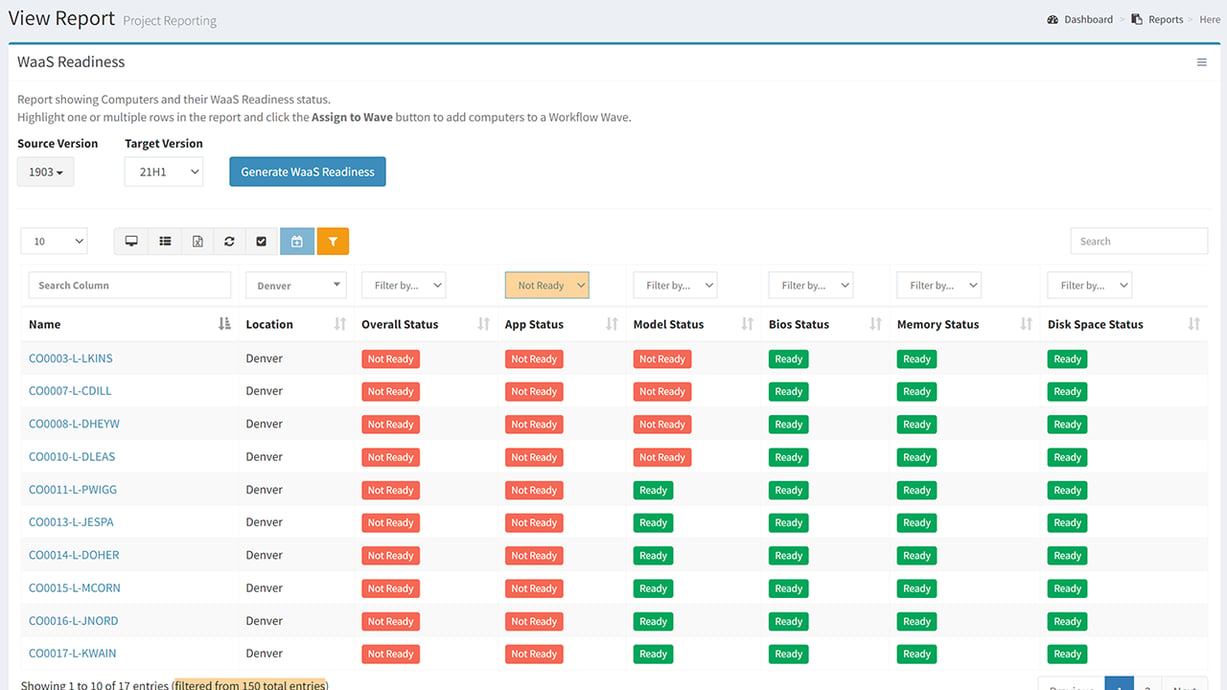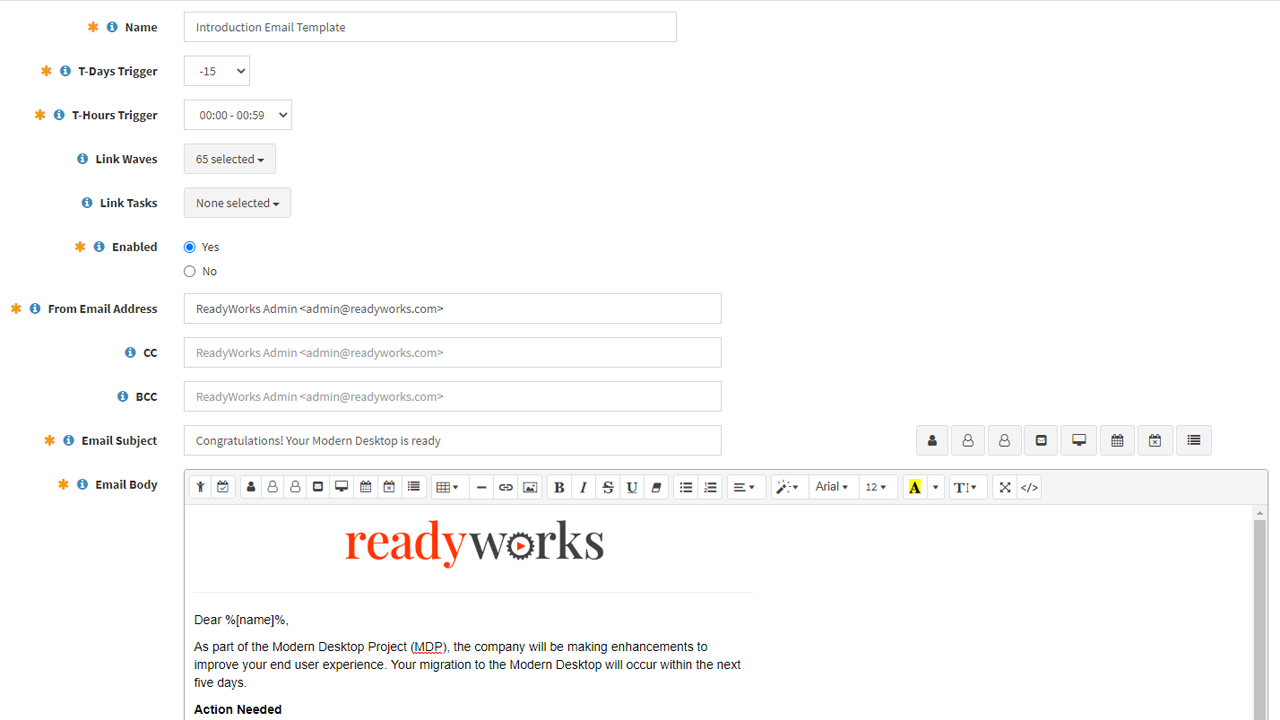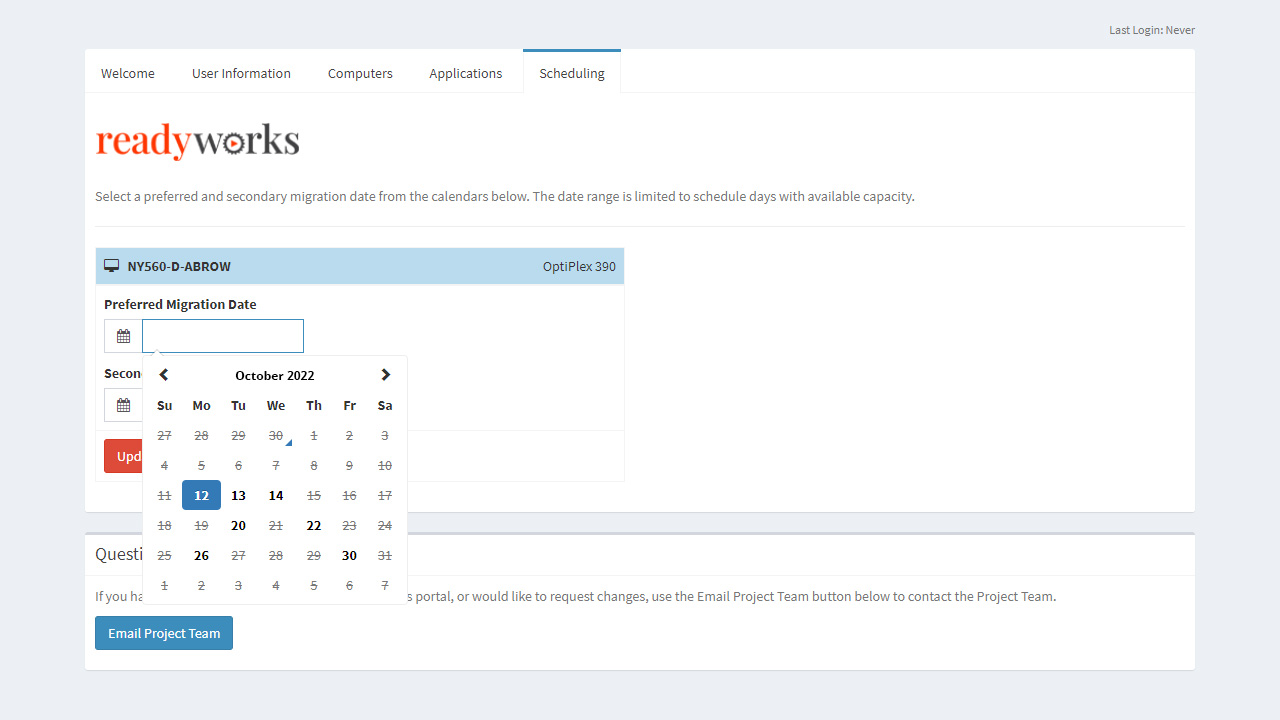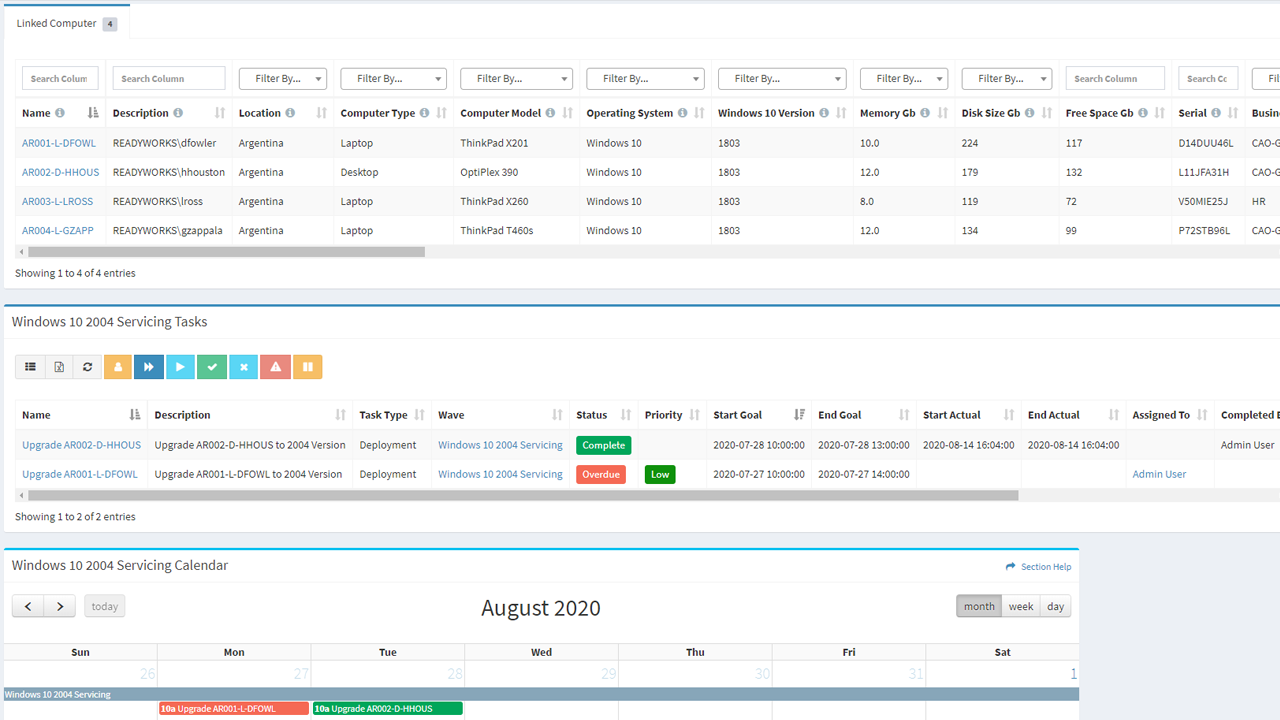Reduce the risk, cost, and effort of managing ongoing Windows updates.
Windows servicing is not going away any time soon. But anyone who has managed an OS update for thousands of end users knows it's time consuming and full of risks. You can disrupt critical operations or hamper user productivity if not managed carefully.
You can’t afford to devote months to pre-testing apps, but you don’t want to blindly roll out the update for fear of crashing access to critical applications.
Prior to planning your rollout you’ll need to identify equipment nearing end of lease, incompatible with the new OS, or due for replacement.
The logistics of handling updates across global teams, thousands of users, and remote workers is immense. You’ll need to avoid updates during critical business hours or blackout dates.
ReadyWorks automates and orchestrates the entire Windows servicing process, helping you avoid business disruption, save time, and reduce costs. ReadyWorks connects to your IT and business systems to collect and rationalize information to give you a clear, real-time view of end users, hardware, and application readiness. It then uses this information to improve project planning, mitigate risk, orchestrate and automate workflows, and improve transparency of program status.
ReadyWorks helps you identify apps and sort them into 3 risk levels:
By coordinating hardware refresh activities with your Windows servicing program you can reduce the number of systems you need to update by approximately 1/3 (based on average 3-year lease cycles). Windows 11 has more stringent hardware requirements, so you’ll also need to replace or update machines that do not meet these requirements ahead of rollout. ReadyWorks identifies hardware nearing EOL or incompatible with the new OS.
Use ReadyWorks to automatically communicate program details with end users and direct them to a self-service portal where they can confirm their information and schedule their update.
Use ReadyWorks reports to analyze information about the status of systems, users, and application readiness.

Use dates or event triggers to deliver communications to your team members and end users. Let them know what is planned, what they need to do, and how to schedule service.

The self-service portal allows you to collect information directly from your end users and have it entered into the ReadyWorks database. Self-scheduling allows users to schedule their upgrade based on your team’s capacity and availability.

Windows Servicing reports help you track the status of your Windows update program.
